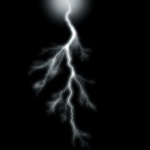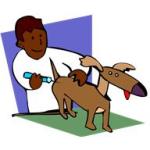We compiled these “factoids” for the Regulatory Information Conference, held in March 2013, based on input from throughout the NRC. Conference attendees found these little known bits of history and trivia interesting. We hope you do, too!
• The NRC’s first Chairman, Bill Anders, was an astronaut on Apollo 8’s mission to the moon.
The NRC’s first Chairman, Bill Anders, was an astronaut on Apollo 8’s mission to the moon.
• In the 1930s, a failed experiment by a Swiss physicist for detecting gas using a radioactive source led to the discovery of smoke detectors when the scientist lit a cigarette and the detector registered a reaction. The NRC approved 70 different smoke detector designs in 2012.
• It is estimated if only one NRC technical reviewer did each design certification application review, it would take 32 years to complete the review.
 • Some lightning rods contain Radium-226 to make them more effective.
• Some lightning rods contain Radium-226 to make them more effective.
• Inspectors from Region IV get a lot of frequent flier miles. They review activities in remote locations such as Guam, Saipan and the northern reaches of Alaska, among other locations.
• NRC’s Office of Nuclear Regulatory Research, the Office of Nuclear Reactor Regulation, and the Office of Nuclear Material Safety and Safeguards are all mandated by Congress.
• With six sites and 11 operating reactors, Illinois has more nuclear power plants than any other state.
• The NRC was the first federal agency to give the public electronic access to all of its public documents through the groundbreaking system known as ADAMS (Agencywide Documents Access and Management System).
• Currently, 59 domestic and 76 foreign organizations use MELCOR, NRC’s system-level severe accident analysis code.
• Currently, 31 licensed research and test reactors are in the United States. The majority belong to colleges or universities.
• The final safety evaluation report for the ESBWR design certification document contains about 3,800 pages.
 • The fastest growing use of nuclear materials in medicine is for diagnostic and cancer treatment procedures in veterinary medicine. NRC inspectors review the use of these materials in veterinary clinics.
• The fastest growing use of nuclear materials in medicine is for diagnostic and cancer treatment procedures in veterinary medicine. NRC inspectors review the use of these materials in veterinary clinics.
Watch for more next week!

Thank you for sharing these little known facts. I did indeed find them interesting.